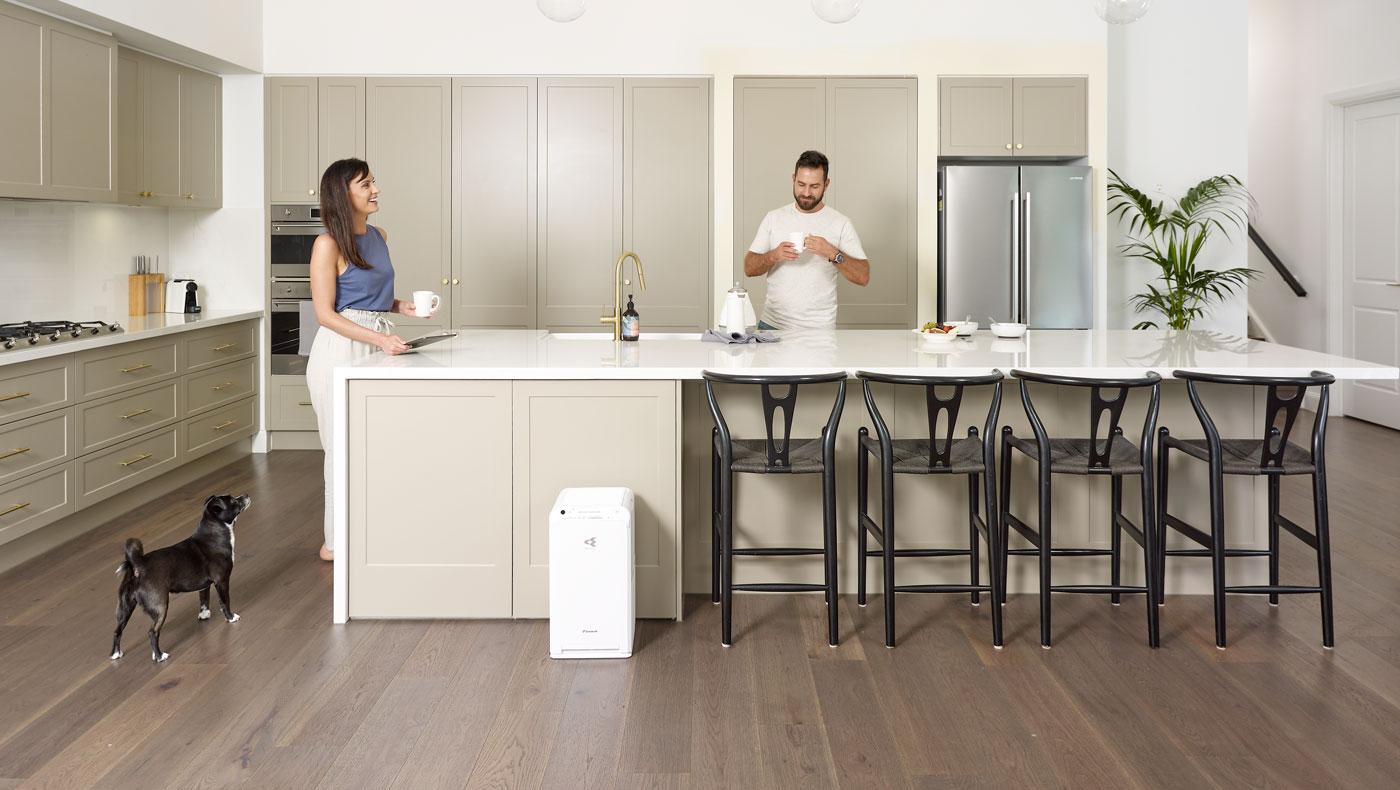Top ten signs the air quality in your home could be better

When it comes to our health and well-being we tend to focus on diet, exercise and whether we get enough sleep. But there is something we don’t often consider that is just as crucial as all these factors - the quality of the air we breathe inside our home. Despite how important it is to our health and wellbeing; it is often something many of us simply overlook. And since we spend the vast majority of our time indoors – a whopping 90% - ensuring we breath clean, fresh air is something we ought to manage better. Especially as there are simple steps you can take to easily and radically improve our indoor air quality.
So how do you know if the air quality in your home is up to scratch? You can always consult with an expert – air quality specialists can come to your home and run tests, isolate the problem and offer valuable solutions. But if you prefer to keep matters in your own hands, here are some key insights that can help you determine if your indoor air quality can be improved. Within your home, look for:
1. Mould Growth
One of the biggest side-effects of poor indoor air quality (IAQ) is mould. As well as being unsightly, mould can negatively affect your family’s health, so it should not be ignored. Mould doesn’t go away on its own – left unattended, it spreads . If you notice mould in your home, this is a sure-fire sign that there are high levels of moisture in your home.
2. Odours
If the air in your house starts to smell strange, this could be a sign of poor IAQ. Musty smells can mean mould, and sickly, bitter smells can suggest poor ventilation. It’s simple: if your air smells bad, you don’t want to be breathing it in.
3. Hot or cold spots
If these suddenly appear, it could mean your home is suffering from bad air circulation. This can often be a symptom of a bigger issue with your AC system, so it might be time to consider calling in the experts.
4.Excess dust
An increase in dust means an increase in particles and contaminates (and you don’t want these to end up in your lungs).
5. High humidity
A humid home is another sign of less than optimal IAQ. High Humidity leads to moisture, resulting in mould, whereas low humidity can leave you with dry skin. If your house is humid, it could also be a sign that your air conditioner is may not be preforming at it’s best and it may be time to book it in for a service.
6. Coughing, chest congestion or respiratory issues
One of the biggest factors of IAQ is the concentration of particles in your air. If these increase they can go straight to your lungs and can lead to chest and respiratory problems.
7. Allergic episodes & watery eyes
If allergy symptoms persist past hay fever season, the weather might not be your problem. Itching, sneezing and irritation can also be signs that your body is reacting to contaminants in your indoor environment. According to Sensitive Choice, to create a healthy home, you need to reduce impact of those triggers, if possible.
8. Headaches
Got a lingering headache, and can’t pin down the cause? It could be down to contaminants like pesticides, cleaning products and garbage that’s been left too long – all of which can affect your indoor air quality.
9. Fatigue or dizziness
These symptoms are generally a sign your air has been affected by fumes or carbon monoxide. If you experience either of these, you should address this immediately.
10. Skin dryness or irritation
Poor IAQ can also affect your skin – especially if you’re prone to sensitivity. If your skin shows signs of dryness, rashes, peeling, flaking or redness, your air could be the issue.
Improve your home’s air quality
One of the best ways to combat poor IAQ is to purify the indoor air in your home using the latest technology. Daikin’s split system air conditioners have in-built air purifying technology and are the only air conditioners approved by the National Asthma Council Australia’ Sensitive Choice Program. Daikin’s Alira X Split System and XL Premium split systems have technology that specifically targets and fights mould formation; with a mould proof operation feature that is activated after cooling or dry operation. The indoor fan continues to operate after it’s switched off to dry up the unit and prevent the build-up of mould and odour.
For added air purification, consider an air purifier, that can be used on its own or in conjunction with your air conditioner for added air purification. Daikin’s air purifiers are incorporated with 4 layers of filtration featuring a prefilter , Deodorising filter, high efficiency particulate filter and Streamer Technology. The air purifier keeps indoor space fresh and healthy by eliminating allergens, moulds, air pollutants and pollens present indoors. For an added bonus, is if you position the air purifier opposite your Daikin Split System, the circulation effect and cleaning can be enhanced.
Luckily, it’s easy to improve the air quality within your home and enjoy all the health benefits of clean air.
